The history of the Gibson SG
Take a closer look at Gibson’s iconic SG range with Gibson's Mat Koehler and David Davidson of Well Strung Guitars
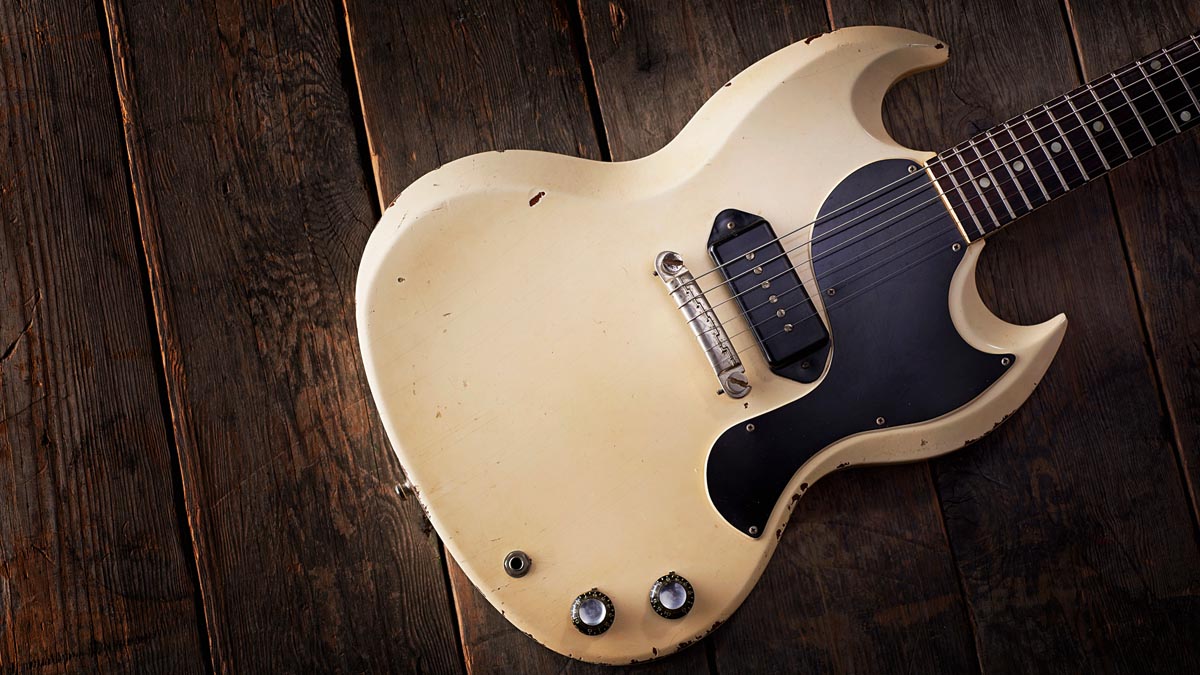
Throughout the 1950s, Gibson continuously revisited and reworked its Les Paul range. One of the most significant changes occurred in 1958 when, in response to customer requests, Gibson modernised its single-cutaway Les Paul Junior, TV and Special models with double-cutaway body designs.
Featuring rounded horns, the revised Junior and TV guitars began shipping that year, followed by the Special in early ’59. Then in late ’59 Gibson rebranded the Les Paul Special and Les Paul TV; renamed the SG Special and SG TV respectively, it marked the beginning of the end for Gibson’s original Les Paul range of solidbody electrics that began in 1952 with the Les Paul Model (Goldtop) .
By 1961, these rounded double-cutaway guitars, along with the Les Paul Standard/ ’Burst and Les Paul Custom’s classic single-cutaway form, had been superseded by a profoundly different design sporting a thin bevelled body with pointed double cutaways.
If you go through Gibson’s history and look at their electric guitars, they rarely got it right first time
David Davidson
Although this unmistakable profile is commonly referred to as an ‘SG’, it wasn’t until 1963 – following the expiration of Les Paul’s endorsement contract in 1962 – that the Junior, Standard and Custom joined the TV and Special in receiving their official SG model designation.
It was a notably creative period in the electric guitar building industry. As the market gathered momentum in the wake of rock ’n’ roll, Gibson president, Ted McCarty – acutely aware of the continued success enjoyed by competitors Fender and Gretsch – responded to the booming demand by testing the water with innovative designs.
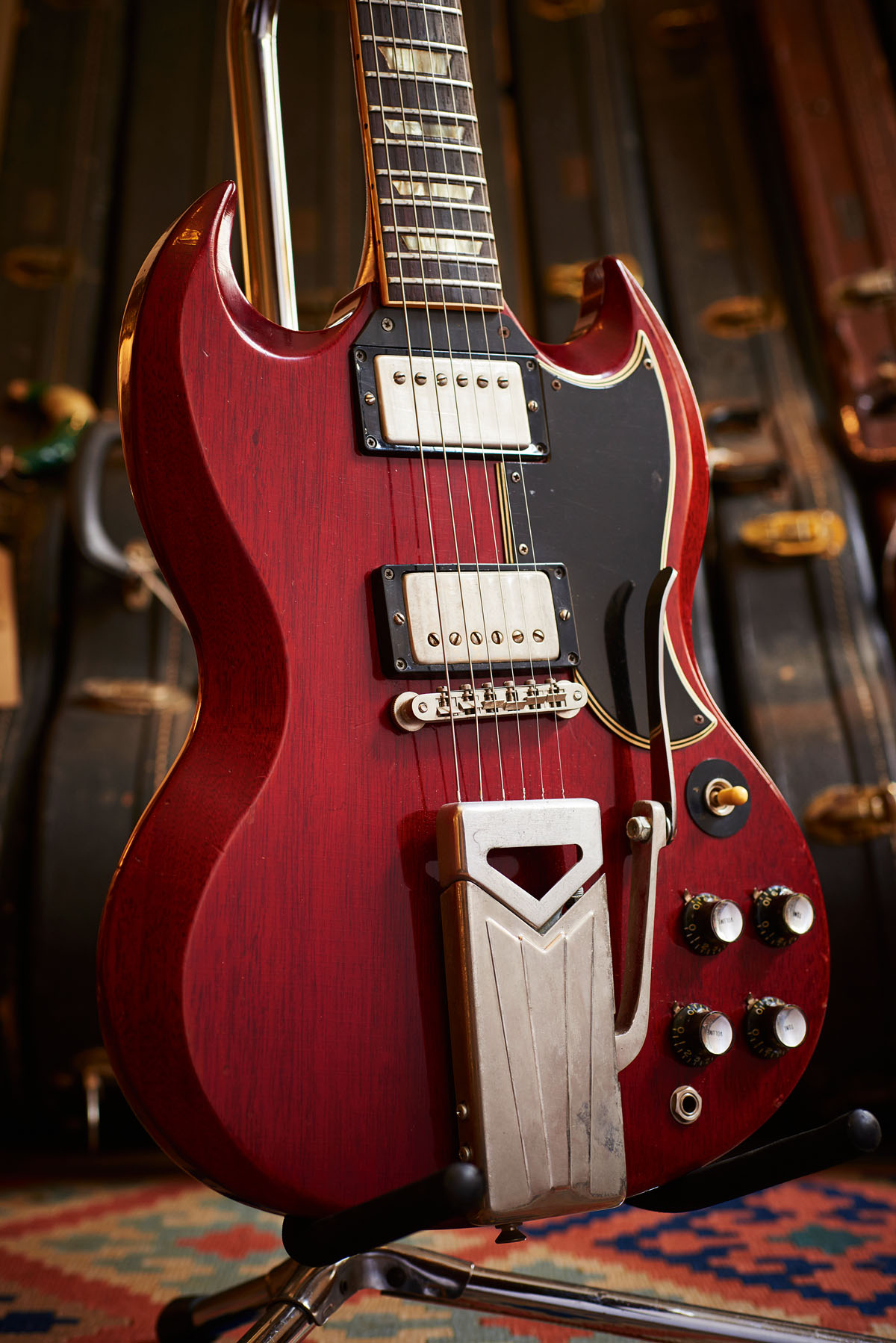
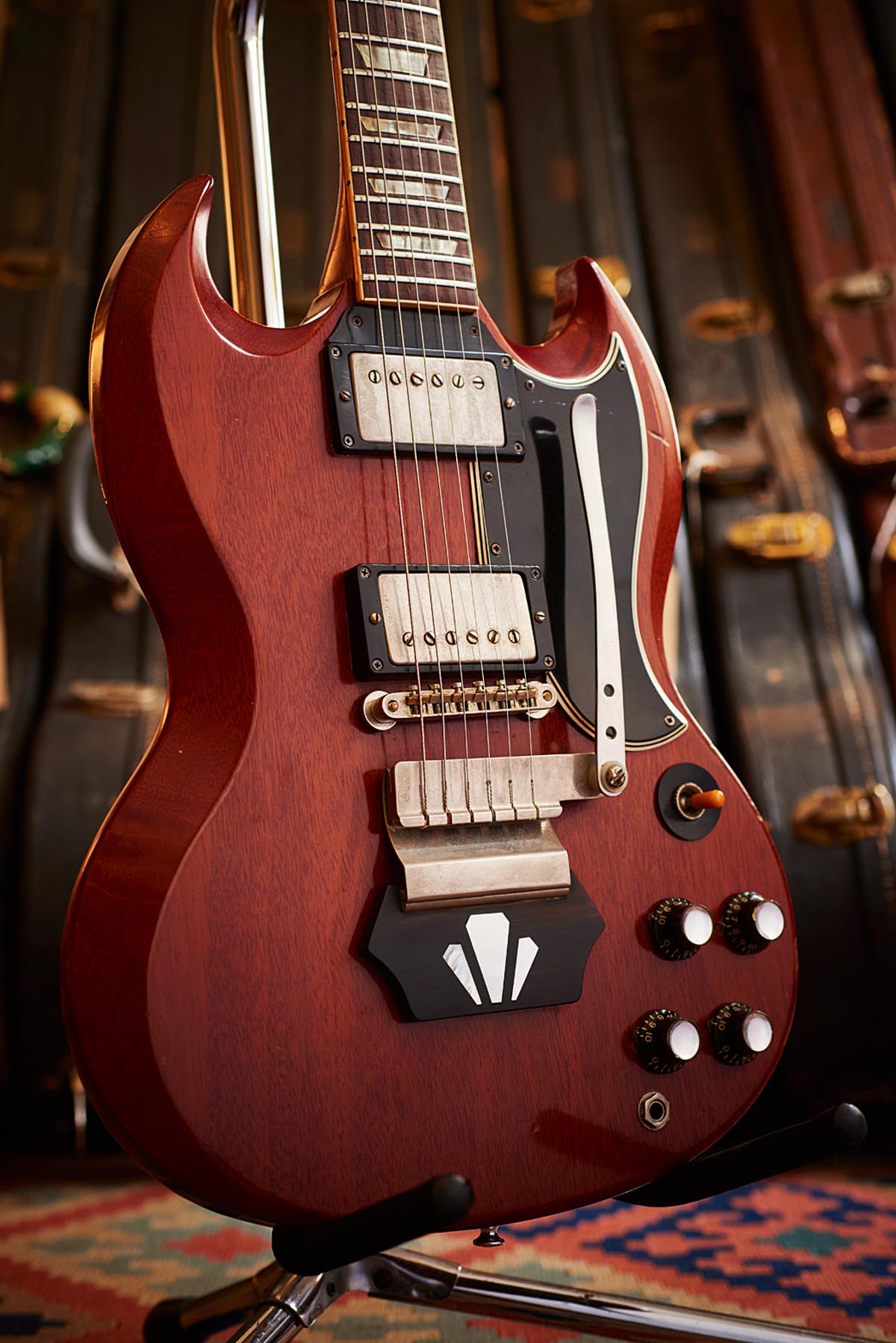
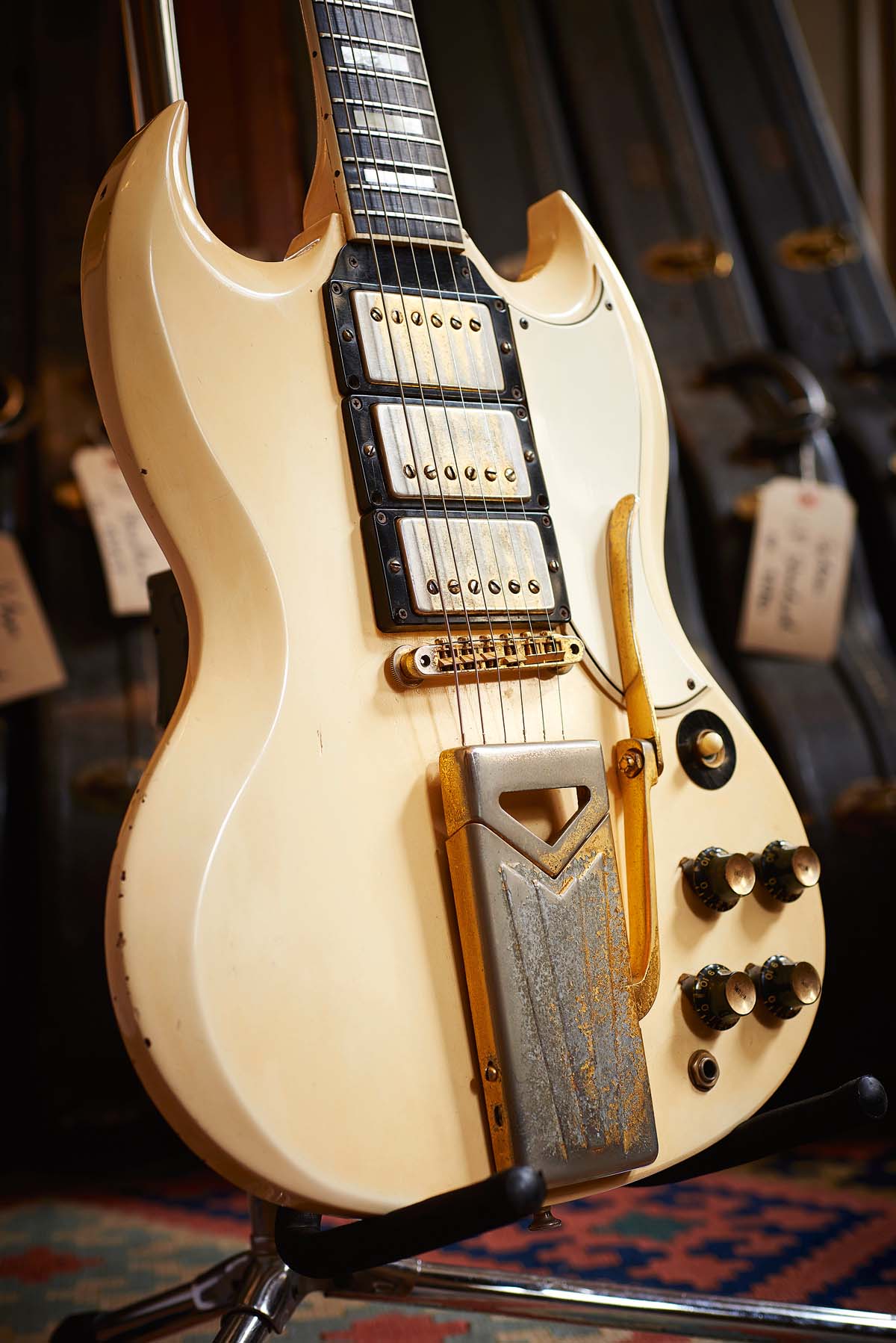
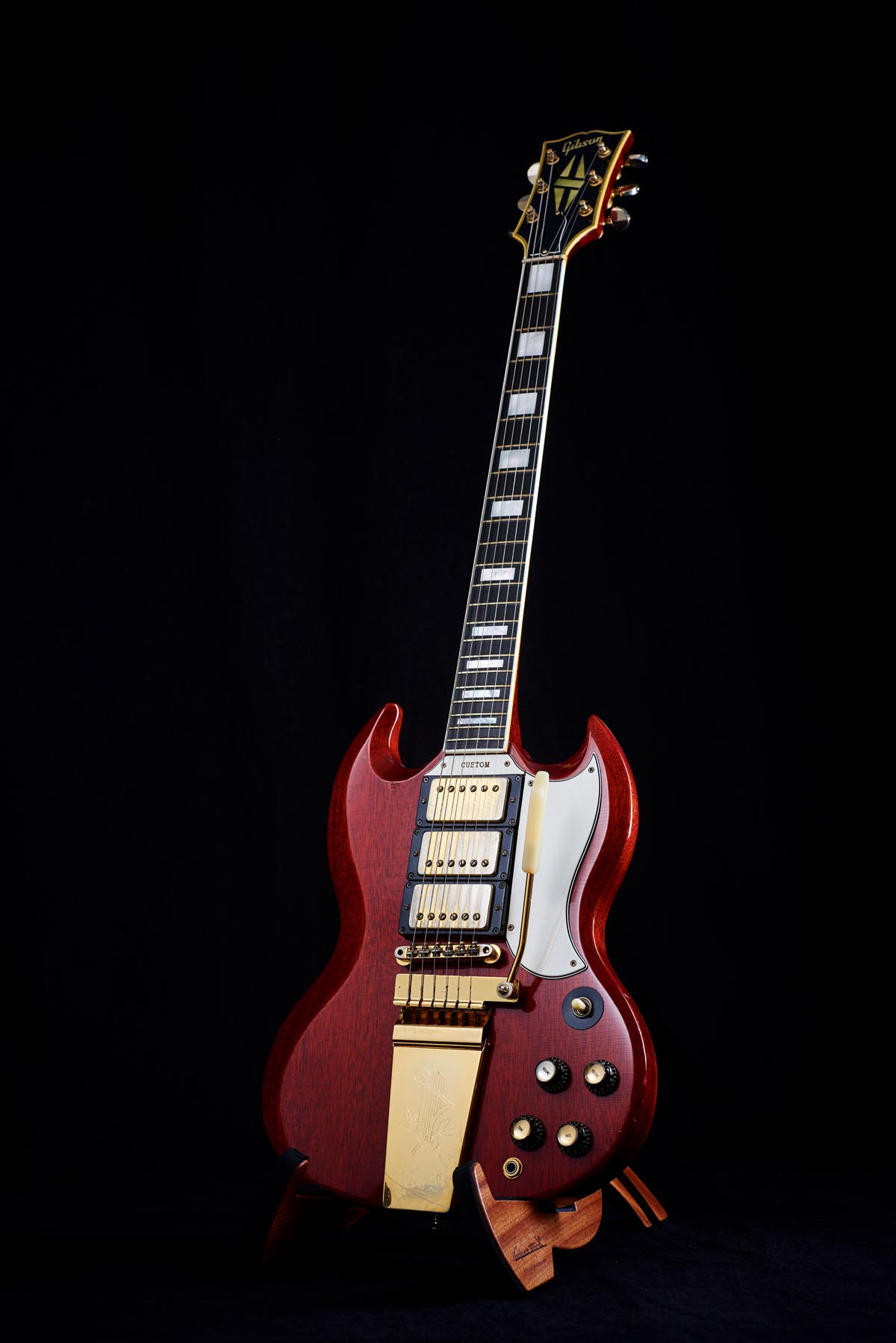
Still, despite being highly coveted today, many of these formative instruments were not considered successful by Gibson at the time and were therefore subject to ongoing modifications and/or discontinuation.
“If you go through Gibson’s history and look at their electric guitars, they rarely got it right the first time,” points out Well Strung Guitars’ David Davidson. As a vintage-guitar-dealing veteran with over 40 years’ experience and the current COO and curator of the Songsbirds vintage guitar museum in Chattanooga, Tennessee, David answered our call to his shop in Farmingdale, New York, to help us gathersome pearls of SG wisdom.
Get The Pick Newsletter
All the latest guitar news, interviews, lessons, reviews, deals and more, direct to your inbox!
“Gibson were constantly playing catch-up with their competitors,” continues David. “Every guitar Fender had churned out was an instant hit that didn’t need to be modified. When they made the Stratocaster, it was great; when they made the Esquire, it was great; when they made the Broadcaster, it was great. They were just great right out of the box. Whereas Gibson took years.
"When you look at the Les Paul, they were always trying to make it better because they failed the first time. When they made the Les Paul Model [in 1952] they had the silly trapeze [tailpiece]. Then they had the stud tailpiece. It wasn’t until they had the ABR-1 [Tune-o-matic bridge] and PAFs [by 1957] that they got it right. But then they come and remodel the guitar again!
There was an almost manic sense of trying to find a vibrato system that worked. There were at least half a dozen different trem systems Gibson used in the 60s
Mat Koehler
“They needed to make the [SG-style] Les Paul Standard and Custom fancy to compete with Fender, so they put a sideways Vibrola on, but they kind of over-engineered the whole thing. They went on to try several different types of tailpiece, but I think the only one that ever really worked well for Gibson generally was a Bigsby.
"Most people took the Vibrolas off and put a stop tailpiece on. That’s why there are so many guitars that’ve been converted over the years. It would’ve been a great guitar if they did it that way from the beginning. Those early years are important because the model’s reputation gets solidified very quickly. If a guitar comes out and it’s not a great player straight out of the box, people tend to move on to what plays well.”
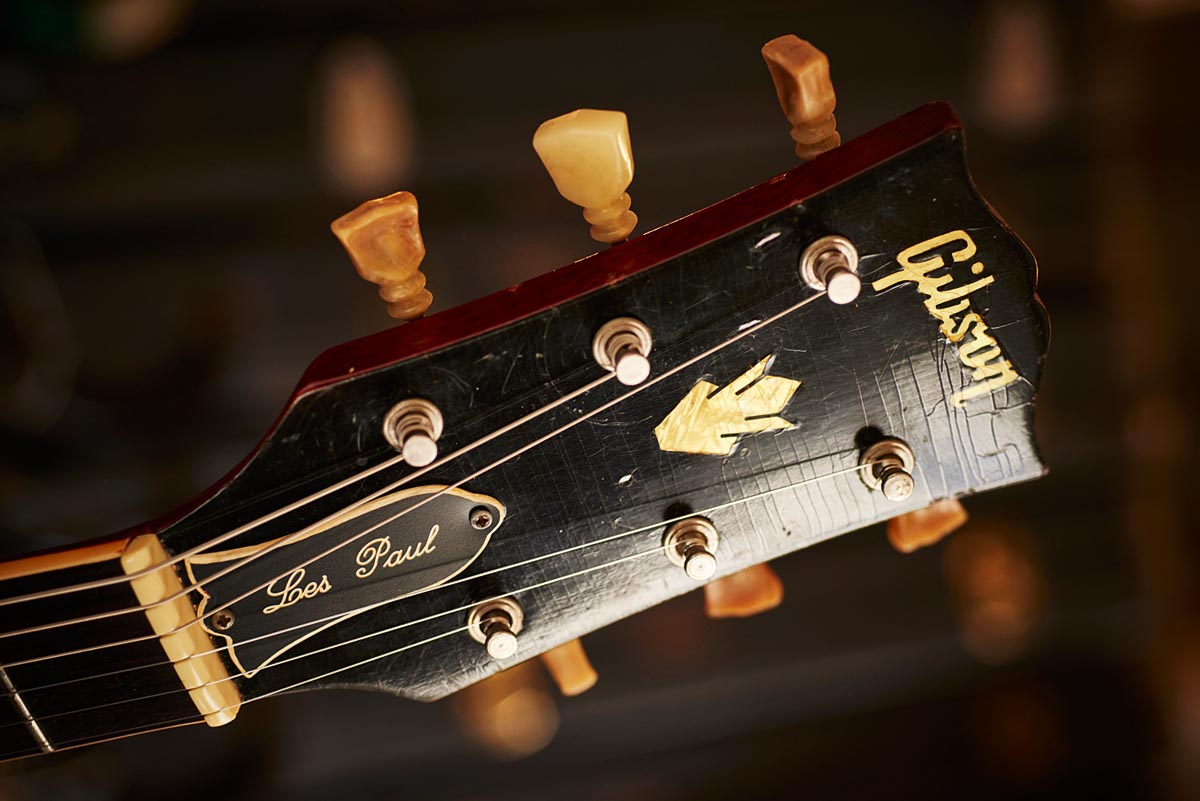
“Gibson experimented with many vibrato systems, especially in the early 60s,” agrees vintage guitar expert Mat Koehler. After spending years running a vintage guitar store, Mat teamed up with the Gibson Custom Shop prior to his current role as head of Product Development.
He speaks to us directly from Gibson’s headquarters in Nashville, Tennessee.
“There was an almost manic sense of trying to find a vibrato system that worked,” he says. “There were at least half a dozen different trem systems Gibson used in the 60s. The reason was to compete with Fender who had the Stratocaster; the Strat had a tremolo system and Gibson thought that it needed to have one.
Arguably, they never did find one that worked even remotely as well as the one on a Strat. “Looking back, it wasn’t the best solution to compete with a Stratocaster, but I will say that when set up well, a long Maestro [Vibrola] on an SG feels right at home.
"I like the balance better with a Vibrola, but there’s a reason why a lot of players modified their SGs to have a stop bar: it offers great tuning stability and a little bit more sustain. The SG Junior and SG Special have wrap-around tailpieces, but even though those guitars are killer, I don’t think that’s how [the SG] was originally intended; I think it was originally designed with the side pull trem in mind, as a way to balance the guitar.”
A double-cut feature
Originally, the key concepts of the SG were most likely presented by the Gibson sales team who tended to keep a close eye on the competition while receiving feedback from dealers and musicians. By 1960, they’d become convinced that double-cutaway electrics were the way forward.
“The Les Paul Special and Junior were already modified into a [rounded] double-cutaway design, and they knew they wanted to modify the Standard and Custom in a similar way,” explains Mat. “As regards the design of the SG itself, all the old-timers from the factory point to a guy called Larry Allers.
"Larry was a woodworker. He was a foreman of the woodworking area and was promoted to an ‘engineer’. That was Gibson’s way of promoting you – to call you an engineer. He became a project manager and if any highly specialised custom orders came along, Larry would often end up with the job. I think they just compiled all their notes from the sales team, gave them to Larry, and he came up with the SG [design].”
With the exception of Sister Rosetta Tharpe, there weren’t that many famous players using an SG when they first appeared in the early 1960s
Mat Koehler
Initially, sales of the new design were encouraging: “We know that Ted McCarty thought Les Paul’s popularity was waning, and we know that sales of the single-cut Les Pauls were not going well,” Mat tells us. “But according to the shipping numbers, the new SG was received very well. It helps that Gibson went to the ’61 NAMM Show without any single-cut solidbody guitars – just their newly redesigned line of sleek, streamlined double-cutaway instruments.
"That clearly helped sell them to dealers. Sales were off the charts in the first couple of years, but it did decline steadily throughout the 60s. It’s no coincidence they reintroduced the single-cutaway Les Paul [in 1968]. By this time, the SG was not necessarily out of favour, but it didn’t have the same kind of success as in the early 60s.
“I think it all circles around what the famous players were using. Eric Clapton and Keith Richards were using singlecutaway Les Pauls, but it took years to catch on. The same goes for SGs. With the exception of Sister Rosetta Tharpe, there weren’t that many famous players using an SG when they first appeared in the early 1960s, but it gets going years later with Pete Townshend and Eric Clapton/The Fool.
"George Harrison also played SGs, but there aren’t that many artists you can point to before the mid-60s. Gibson was struggling to find its identity, especially with the rise of Fender on the West Coast.
When you get to the mid-60s, you start seeing more custom colour SGs, normally in Firebird colours like Pelham Blue
Mat Koehler
"Automotive design was a major influence across the industry – the colours and exaggerated features mimicking automotive trends – but I think Gibson still thought of themselves as an archtop building company, even throughout the 60s. I mean, look at their endorsements and advertisements: it was all jazz players and archtop guys.”B
Beyond the custom colours
“Back in the old days, I’m sure if you wrote a letter to Gibson asking for a colour from the [Firebird] chart on such-and-such a guitar they’d make it for you,” concurs David. “Also, I think custom colour guitars would sometimes be made and displayed at a trade show then sold on.
"The earliest [SGs] I’ve seen in colours are always Customs, not Standards – I have one in Cherry Red, one in black, and I also have a sunburst from ’63. When it comes to Standards, I have an Inverness Green, a Pelham Blue, a Sparkling Burgundy, a Cardinal Red and one in black.
"We also have a custom-ordered ’64 SG Standard in Cherry Sunburst at the museum. I think ’64 to ’66 was the crest of the wave. Custom colour SGs are pretty darn scarce from the late 60s and are pretty much done by the beginning of the 70s.
“Throughout the [70s] Norlin period and beyond, they tried to make the SG into the cheaper guitar – ‘the affordable Gibson’. I think they were trying to reinvent the wheel and the SG really suffered: the necks got really thin, the quality of the workmanship went way down, and they tried to make many models that were unsuccessful – like the SG-200. They lost their way, but Gibson are doing the best thing now by going back to their roots and making them correctly.”
Norlin were basically over-steering and over-engineering solutions. That’s evident from the ever-changing SG designs to the bracing on the acoustic guitars
Mat Koehler
“The Norlin era is a different animal altogether,” says Mat. “Having access to the engineering archive, I think the pity about it is that they were a lot more proactive about things than people often think. They were always problem solving. But that was to the detriment of everything.
"They were basically over-steering and over-engineering solutions. That’s evident from the ever-changing SG designs to the bracing on the acoustic guitars. That’s not to say they didn’t make some great instruments; it’s just the process was a lot different in that era than it was earlier. SGs were a much easier guitar for Gibson to build in all of their forms, compared with single-cutaway Les Pauls because they don’t have maple tops and binding – they’re easier to make and easier to get through production.
“In the 60s, I think Larry [Allers] was steeped in the Gibson tradition of building set-neck instruments and with the SG he was just trying to build a solid-bodied modern-looking guitar. I don’t think he was that intent on changing the way production operated at the time, which is something I can relate to now.
"We have very specific ways of hand-crafting set-neck guitars. It’s a process. To do that right you have to build the neck tenon a little bit larger than the area that accepts it, and you kind of chisel away as you go while being mindful of the neck angle. It can take up to an hour just to set the neck of one guitar.”
We have very specific ways of hand-crafting set-neck guitars. It’s a process. To do that right you have to build the neck tenon a little bit larger than the area that accepts it
Mat Koehler
Today, Gibson is returning to its roots with a fresh perspective under new leadership. “On the one hand we’re returning to our roots in terms of design,” says Mat, “and on the other we’re being more mindful of how we are perhaps stuck in our ways on the manufacturing side.
It’s not like a Norlin situation: we are just finding ways to modernise our production. That’s where the real work comes into play. We’re asking not only what makes it the best instrument, but what’s the strongest, smartest and most historically accurate instrument we can make. It’s about finding ways to modernise production and go back to what made our instruments great in the first place.
“We still have the same goal, but we have fresh, new ways of thinking about it. And we’re definitely not having machinery take the place of people, because try as we might to modernise to that extent, the answer to most of our problems is usually: find an expert. There’s usually a human being who can get us the result we’re looking for.”
- Guitarist would like to thank Paul Tucker, Vintage ‘n’ Rare Guitars of Bath, and the Songbirds Guitar Museum
Rod Brakes is a music journalist with an expertise in guitars. Having spent many years at the coalface as a guitar dealer and tech, Rod's more recent work as a writer covering artists, industry pros and gear includes contributions for leading publications and websites such as Guitarist, Total Guitar, Guitar World, Guitar Player and MusicRadar in addition to specialist music books, blogs and social media. He is also a lifelong musician.
“It holds its own purely as a playable guitar. It’s really cool for the traveling musician – you can bring it on a flight and it fits beneath the seat”: Why Steve Stevens put his name to a foldable guitar
“Finely tuned instruments with effortless playability and one of the best vibratos there is”: PRS Standard 24 Satin and S2 Standard 24 Satin review











